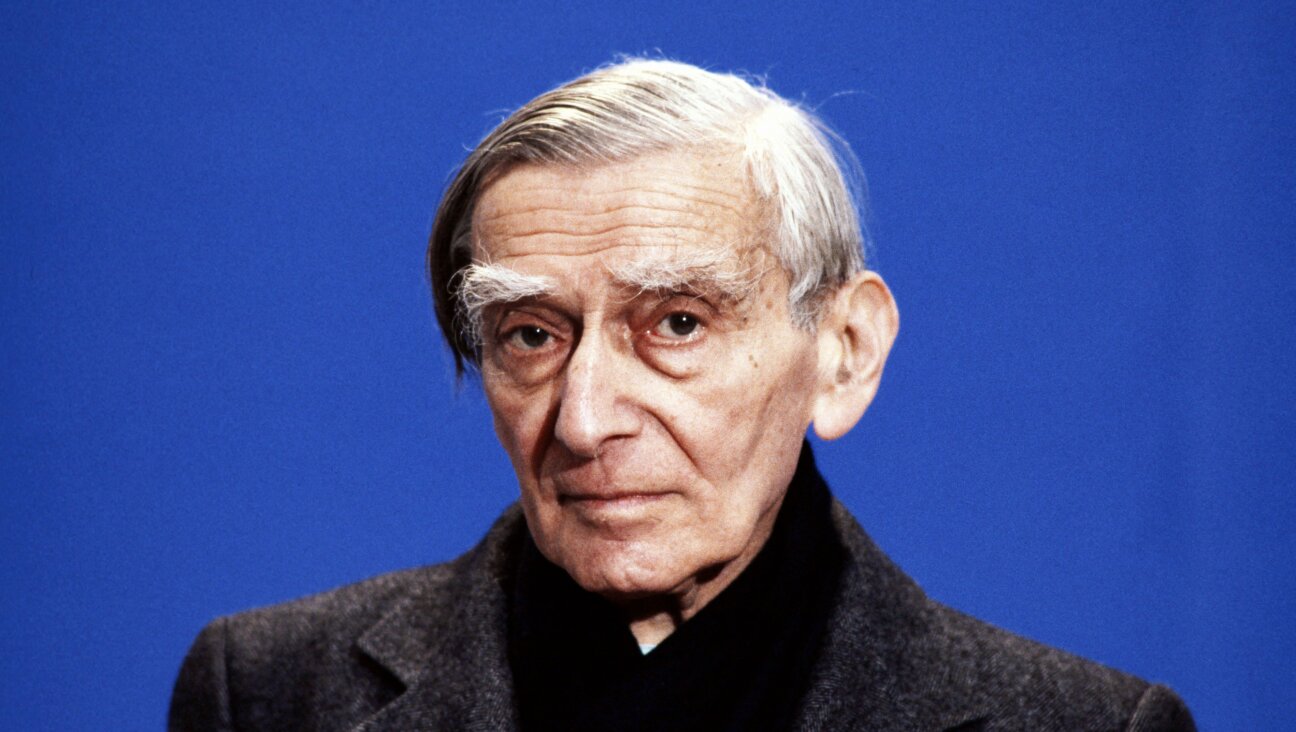Springtime for Spinoza
In April 1655, the year before Amsterdam’s Jewish community excommunicated him, Baruch Spinoza was the victim of a failed assassination. According to French encyclopedist Pierre Bayle, Spinoza was attacked “on leaving the theatre by a Jew who attacked him with a knife. The wound was slight, but Spinoza believed that it was the assassin’s intention to kill him.” In all likelihood, Spinoza was in the company of his close friend and Latin mentor, Franciscus van den Enden, known to be a passionate lover of the theater. Most accounts of Spinoza’s life append the story of this attack by noting that he wore the deliberately un-mended coat as a badge of courage until his dying day.
It’s a safe bet that Spinoza never again darkened the door of any theater. Not so much because of any post-traumatic association, but because of his utter disinterest in all things dramatic (the fanatically rationalist Spinoza famously disdained the imagination as the root of all human ignorance and misery). But though Spinoza lived one of the most secluded and anti-dramatic lives of any philosopher — spending his last years sequestered in his tiny, unventilated attic in the Hague, where he finally succumbed to lung disease at the age of 44 — his brief and very quiet years were later the subject of no fewer than five Yiddish plays, two of which remain in manuscript and only one of which ever made it to the stage.
What it was about Spinoza that kindled the imaginations of so many Yiddish playwrights lies far beyond the scope of this article. The YIVO exhibit Spinoza in the Yiddish Mind offers rich evidence of this curious phenomenon. It is on display from October 23 to December 31 at the Center for Jewish History, in conjunction with the International Conference to be held October 29, marking the 350th anniversary of Spinoza’s excommunication. Among the items on display in this unusual exhibit is a colorful poster announcing the March 26, 1961, “world premiere” of Yiddish writer Barukh Sloves’s play “Borukh fun Amsterdam,” first staged in Warsaw by Poland’s Yiddish State Theater. Sloves’s play packed Warsaw’s Yiddish theater for its three-night run, and was subsequently staged in London and Paris before dying after a short run during the spring of 1962 at New York’s Folksbiene Theater on East Broadway.
The play was more polemical than entertaining, not only indicting the rabbis for their fanaticism in persecuting the young freethinker but also suggesting, ludicrously, that this zealotry was fueled by a messianic fervor inspired by the belief that they were living in apocalyptic times, heralded by the “revelation” that Shabbetai Zevi was the messiah. (It was not until nine years after Spinoza’s banishment from Amsterdam that Zevi’s prophet, Nathan of Gaza, openly declared him to be the messiah.)
Beyond the use of Spinoza as a stick with which to beat the rabbis, Sloves greatly embellished Spinoza’s love life, deepening the tragedy of his ban by inventing a passionate affair between young Baruch of Amsterdam and the beautiful and virtuous Rochel — whose fictional grandfather pleads, to no avail, with the cabal of rabbis persecuting Spinoza for his liberal ideas to show mercy. Great Yiddish stage diva Ida Kaminska was cast in a leading role as Manuela, Rochel’s flamboyant, Portuguese-born mother whose disdain for the rabbis and contempt for the dry culture of Amsterdam’s Jews offers the play’s most memorable lines.
Among the four plays that never left the page for the stage, the most interesting by far was the three-act drama “Borukh Spinoza: Images of his Life” by Soviet Yiddish writer Meyshe Belenki. Like Sloves, Belenki presents Spinoza as the victim of religious intolerance, but his play remains far more faithful to both history and Spinoza’s philosophy, and includes some fascinating (and plausible) dialogues between Spinoza and his friends van den Enden and Ludwig Meyer.
What explains the temptation of five Yiddish writers to try their hand at rendering Spinoza’s life onstage? The oft-drawn and always far-fetched connection between Spinoza and Uriel d’Acosta — whose series of excommunications resulted finally in his tragic suicide when Spinoza was only 8 years old — may offer a clue. Unlike Spinoza, however, who never wrote about himself, d’Acosta left behind a heart-wrenching memoir. And unlike Sloves’s “Borukh fun Amsterdam,” which enjoyed only a very brief run, the Yiddish play “Uriel Acosta,” adapted from the popular 1846 German drama by celebrated dramatist Karl Gutzkow and starring the great Alexander Moissi in the title role, was a staple of the German Jewish, and later the Yiddish, theatrical canon for more than a century. According to an article in New York’s Daily Worker, Gustkow’s play was “as early as 1860, one of the major attractions of New York’s Stadt Theatre… which presented great German and other foreign stars in the best plays the world had to offer.”
In its several Yiddish versions, “Acosta” became a staple of New York’s Yiddish theater scene, featuring its finest talents. Its musical score was by the legendary Abraham Goldfaden, and the play launched the career of an incomparable Yiddish stage star, Jacob Adler, who called d’Acosta “my first great role” in his autobiography, as well as that of David Kessler, Adler’s main rival. In 1919, “Acosta” became the first major success of Moscow’s Yiddish State Theater, whose director, Alexander Granovsky, eventually also directed the Hebrew version of the play for Berlin’s Hebrew theater, Ha-Bimah, in 1930. In fact, “Acosta” was the very last Hebrew play staged in Germany before Habimah moved to Tel Aviv.
The tremendous, century-long successes of the various German, Yiddish and Hebrew productions of “Acosta” likely inspired hope in the five Yiddish playwrights who took him on, that Baruch Spinoza — often, and incorrectly, depicted as d’Acosta’s disciple — might also be a stage success. Though the reviews in the Yiddish press for Sloves’s play were polite, “Borukh fun Amsterdam” — the Yiddish Springtime for Spinoza — began in March 1961 and was over by May 1962. But, though Spinoza may have died prematurely on the Yiddish stage, he continued to enjoy a rich posthumous life in all the genres of Yiddish literature.
Allan Nadler is a professor of religious studies at Drew University.
A message from our Publisher & CEO Rachel Fishman Feddersen

I hope you appreciated this article. Before you go, I’d like to ask you to please support the Forward’s award-winning, nonprofit journalism so that we can be prepared for whatever news 2025 brings.
At a time when other newsrooms are closing or cutting back, the Forward has removed its paywall and invested additional resources to report on the ground from Israel and around the U.S. on the impact of the war, rising antisemitism and polarized discourse.
Readers like you make it all possible. Support our work by becoming a Forward Member and connect with our journalism and your community.
— Rachel Fishman Feddersen, Publisher and CEO























